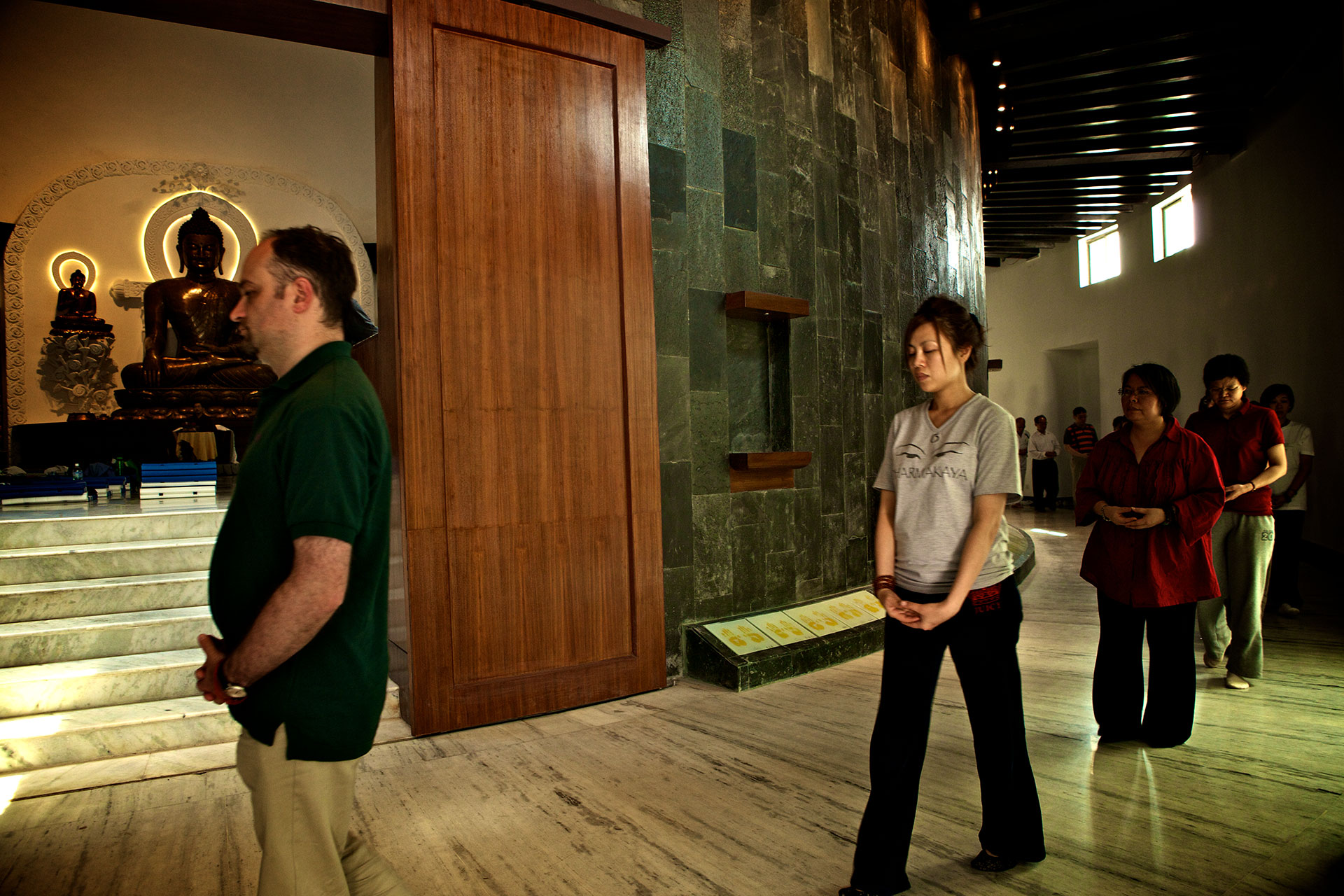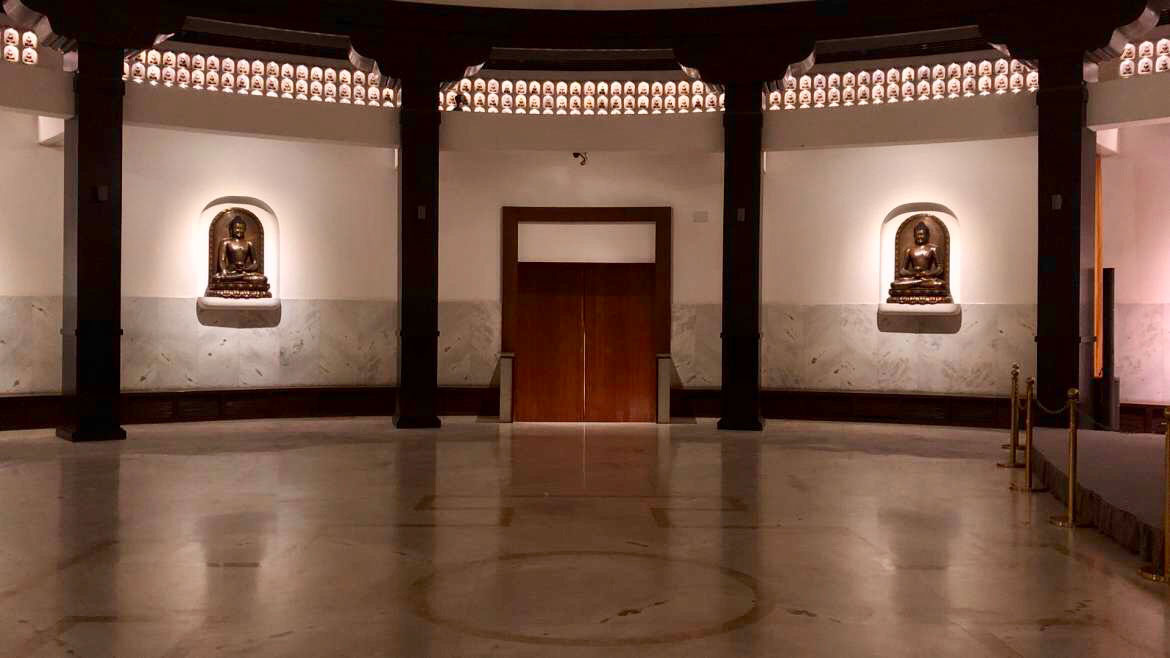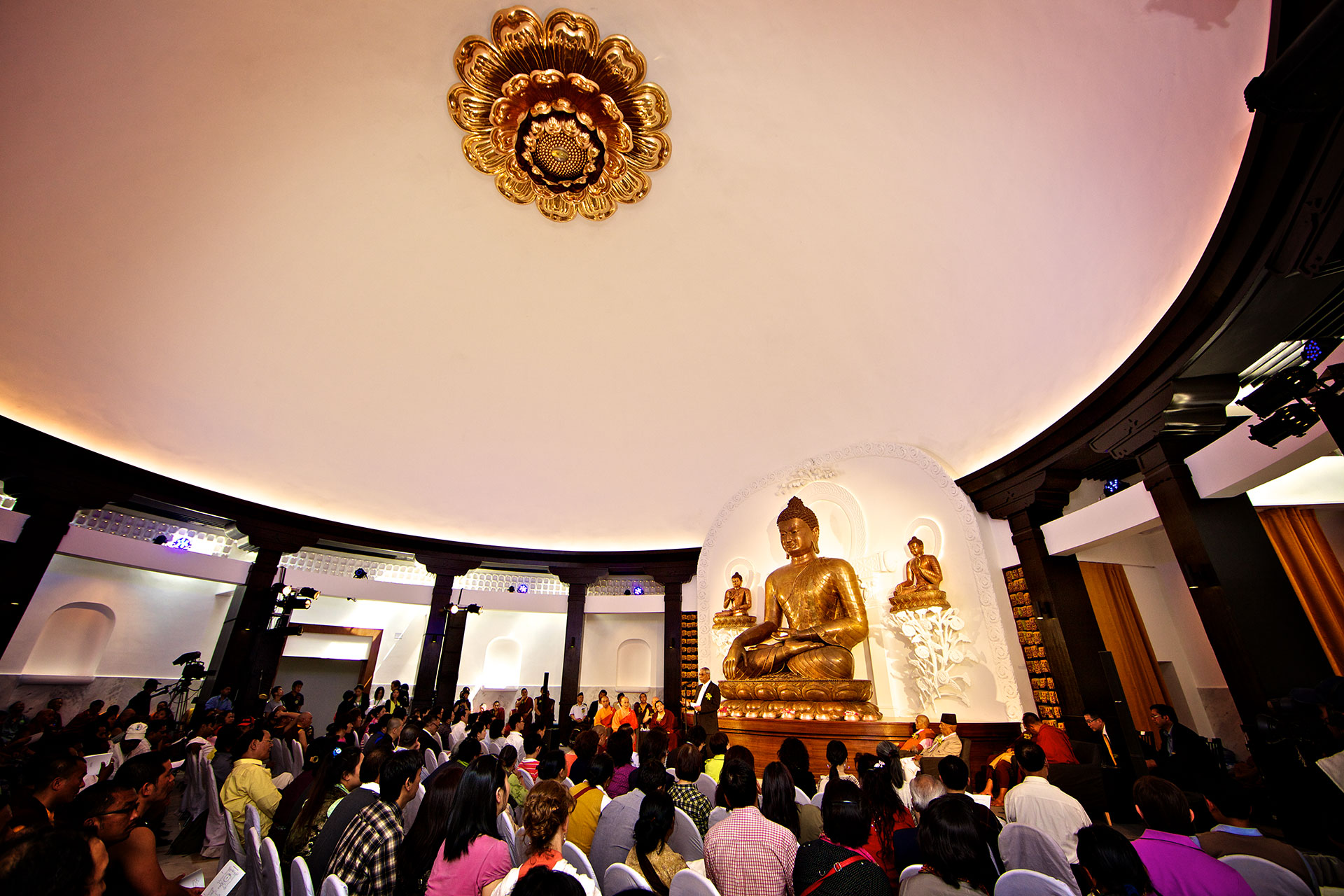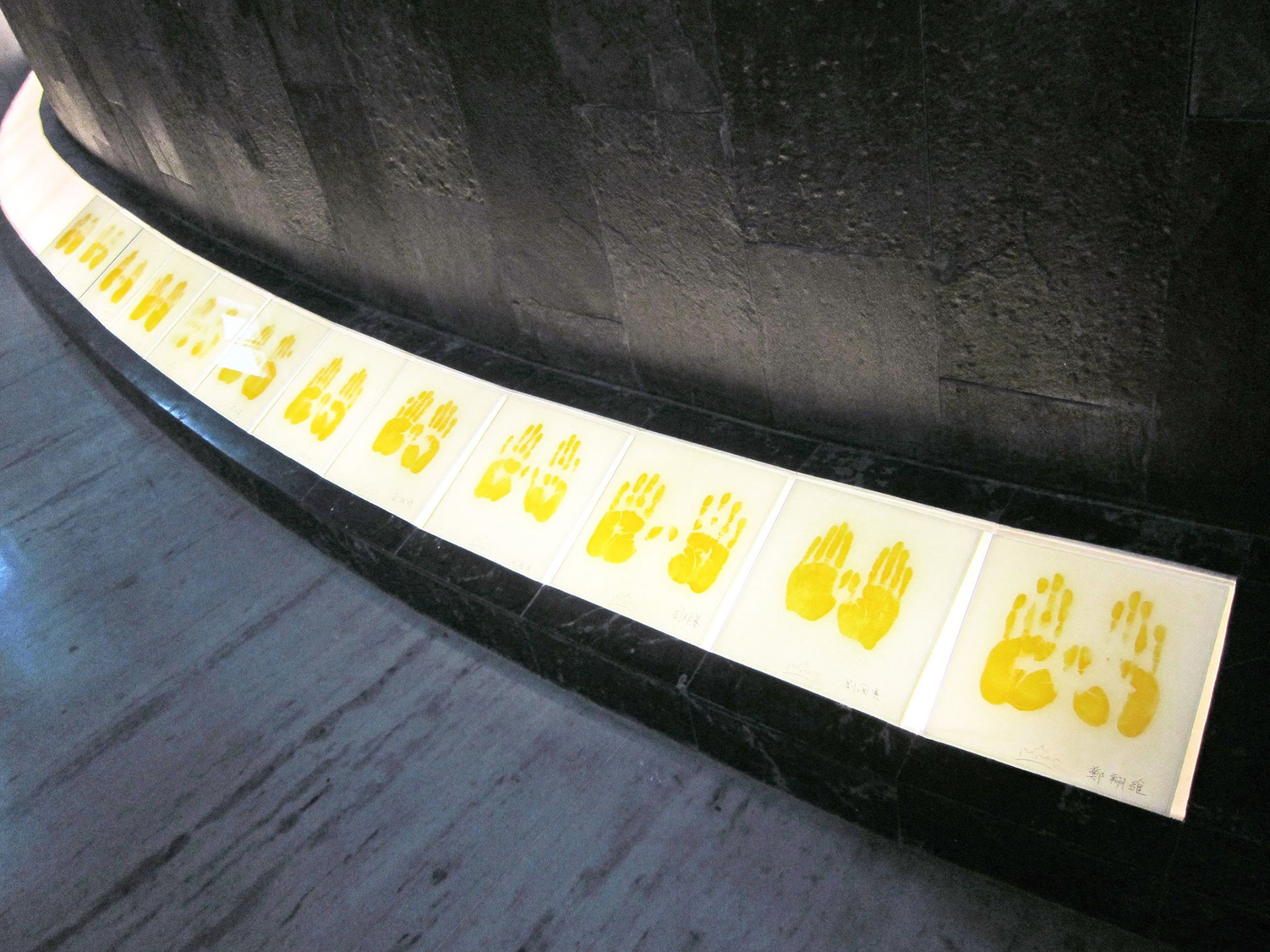Architectural Features
Architectural Features
Architecturally, the Center integrates modernity and tradition. Its shape, designed by Rinpoche himself, is based on the Stupa of Shariputra at the ancient site of Nalanda Buddhist University. Four towers – one at each corner of the Stupa – symbolize the embrace and protection of the blessings of the four immeasurable thoughts: loving kindness, compassion, joy and equanimity. Inside the Great Stupa, the Main Hall contains statues of Buddha Shakyamuni and other Buddhas and Bodhisattvas. On the dome, the wisdom eyes of the Buddha gaze in all four directions. The thirteen levels of enlightenment and sacred symbols such as the precious umbrella and the victorious banner are also engraved there. In every aspect, the building combines traditional Nepalese architecture and Tibetan Buddhist decorations, conveying the spirit of Buddhism regardless of national boundaries.
As a precaution against earthquakes, Rinpoche required that the structural strength of the building be enhanced. For the outer walls, a double-layer system was adopted to suit the local weather conditions and to save costs; this was the first time such a structure was built in the area. The structural beams of the central dome are concealed within the floor system, helping to reduce heat in Nepal’s summer season, as well as to provide a neater and more spacious view of the inner dome.
The Center is the tallest building in the Lumbini Development Zone, and its central location in the area highlights its significance. From the top of the tower, the World Peace Pagoda in the Northern Tourist Service Area and the historic relics in the south can be seen.
Each of the Center’s statues of Buddha is unique, yet they all look calm, peaceful, and filled with blessings. They serve as ideal objects for prayer and meditation, showing the unity of Buddhism across different traditions and regions of the world.
The Stupa and the Meditation Hall
The meditation hall is at the center of the temple, combining the blessings of the stupa and the functional space for teaching and practicing. The design is based on the Shariputra Tower in the ancient Nalanda Buddhist University, however its innovative double – decker structure has been adopted to create a 13-meter-high space inside the hall. The stupa represents the merits of the Buddha. If we devoutly respect the stupa, our minds will be opened, enjoying the same effect brought by showing direct reverence to the Buddha. Just as the Buddha once said, “Whoever sees, hears (the sound of bells from a stupa) or is touched by the breeze (that blows across a stupa) will gain ultimate liberation.”
The Indoor Circumambulation Corridor
A unique Circumambulation Corridor encircles the Hall, enabling practitioners to circumambulate the Stupa indoors during both very hot weather and the rainy season. Such circumambulation signifies our journey to enlightenment.
In niches around the corridor, statues of Kshitigarbha, Mayadevi, Milarepa, Vajrachanda, Nirvarana viskambi, Lokeshvara, Vajravarahi, White Tara, Maitreya, Usnisa-Sitatapatra, Thousand-arm Lokeshvara, Samantabhadra, Achala Krodharaja, Kurukulle, Vajrapani, Akashagarbha, Mahakala, Padmasambhava, Nagaraja Vasuki and Manjughosha provide models of great love and compassion, motivation along the path to Buddhahood.
The Surrounding Buddhas and Bodhisattvas
Entering the main hall, you will see the statue of Buddha Shakyamuni smiling and gazing down at you. He is flanked by statues of Buddha Dipamkara, Maitreya, Vairochana, Amitabha, Avalokiteshvara with four arms, other Buddhas and Bodhisattvas. Surrounded by them, you will be inspired with feelings of devotion and faith as if you were personally attending a Dharma gathering. They are our spiritual companions and models of compassion able to enlighten and guide us on our journey towards Buddhahood.





